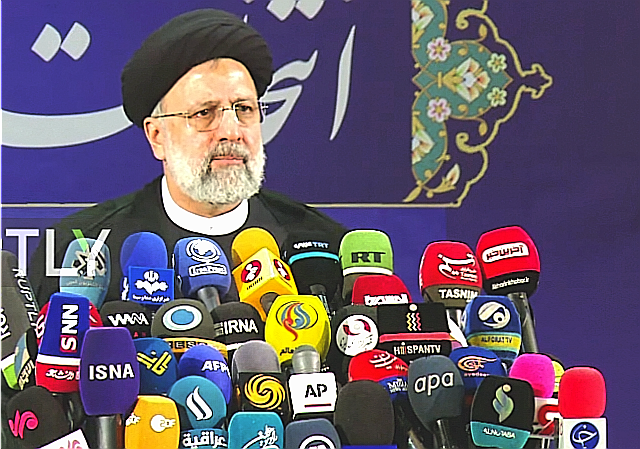NATO, UN, and State Department Offer ‘Condolences’ for Death of Iranian President Raisi

NATO, the United Nations, and our State Department all offered condolences for the death of Iranian President Ebrahim Raisi and Foreign Minister Hossein Amir-Abdollahian.
I cannot wait to see how they all react when Russian President Vladimir Putin finally croaks.
Holy moly.
The U.S. Ambassador to the United Nations even took part in a moment of silence for their deaths.
https://twitter.com/greg_price11/status/1792642952507830283?ref_src=twsrc%5Etfw
Raisi earned the nickname The Butcher of Tehran for his part in the death committee to slaughter political prisoners in 1988. Anywhere between 5,000 to 30,000 died at the hands of Raisi and others.
Ayatollah Ruhollah Khomeini went to extreme lengths to keep his power after he and his thugs overthrew the Shah in 1979. He became supreme leader in November 1979 and fully engulfed Iran by early 1980.
Opposition groups rallied against Khomeini, especially the Mujahedeen-e Khalq (MEK). The group started gaining support within Iran once the Iranians realized that Khomeini intended to rule with an iron first and implement strict Islamic laws:
The disagreements between the MEK and Khomeini were many. The MEK opposed compulsory hijab (veiling) and emphasized gender equality; they boycotted the referendum on Khomeini’s constitution because it was based on the principle of velayat-e faqih (absolute authority of the Supreme Leader), which they said contradicted the right to popular sovereignty; they rejected retribution and other inhumane laws under the guise of sharia, and they not only denounced any form of ethnic or religious discrimination but also insisted on the acknowledgment of minority rights.From the first days of the Revolution in February 1979 until June 1981, despite the increased suppression and constant attacks by vigilantes on MEK activists, public support for the organization increased. During this period, at least 50 supporters were killed and several thousand imprisoned for distributing newspapers and other peaceful political activities. Despite all these crimes, MEK never retaliated.
Khomeini’s regime began executing MEK rebels in 1981, including children, pregnant women, and the elderly.
The NRCI noted that Khomeini continued the Iran-Iraqi war after a peace solution in 1982 because it kept the MEK in check. However, once the war started shaking Khomeini’s regime, he ended it in July 1988.
Shortly after the end, Khomeini issued two fatwas, demanding the slaughter of his opposition.
Raisi comes into the picture with the massacres in the Evin and Gohardasht prisons in Tehran. Khomenei chose him as head of the Judiciary, where he gained a reputation as the hanging judge and the Butcher of Tehran:
Some of the survivors of the executions have narrated that they saw Ebrahim Raisi in the corridors and torture chambers of the prison while he was working on the execution cases without religious clothes or a turban and clad wearing comfortable clothes.Ebrahim Raisi, who proved his ruthlessness during the 1988 massacre and gained Khomeini’s special trust after this massacre, was greatly appreciated by Khomeini and received orders to hold top positions.
In August 1988, Massoud Rajavi, president of the National Council of Resistance of Iran (NRCI), told the UN that “just on the 14, 15 and 16 of August, 860 bodies of executed political prisoners from Evin Prison in Tehran were taken to Behesht Zahra Cemetery. Before that, on 28 July, 200 political prisoners who supported the MEK were massacred in the central hall of Evin Prison.”
Executions spread to other cities, with officials citing an “urgent” need to exterminate the opposition as quickly as possible. Hardly any documents survived about executions in cities other than Tehran and Karaj. The list of names provided by the NRCI includes 110 cities.
An audiotape released in 2016 from a meeting with Hussein-Ali Montazeri, who should have been Khomeini’s successor but was deposed, and four of the men in charge of the massacre is Tehran and Karaj, he revealed: “They have done everything in the other cities… They say it was very brutal in Ahvaz … There was a pregnant woman among the executed in Isfahan.”
Montazeri wrote about Khomeini issuing a fatwa to execute Marxist prisoners.
Some say the massacre happened from July to September. Others claim it went to December.
However, evidence exists showing the massacre continued into 1989.
CLICK HERE FOR FULL VERSION OF THIS STORY